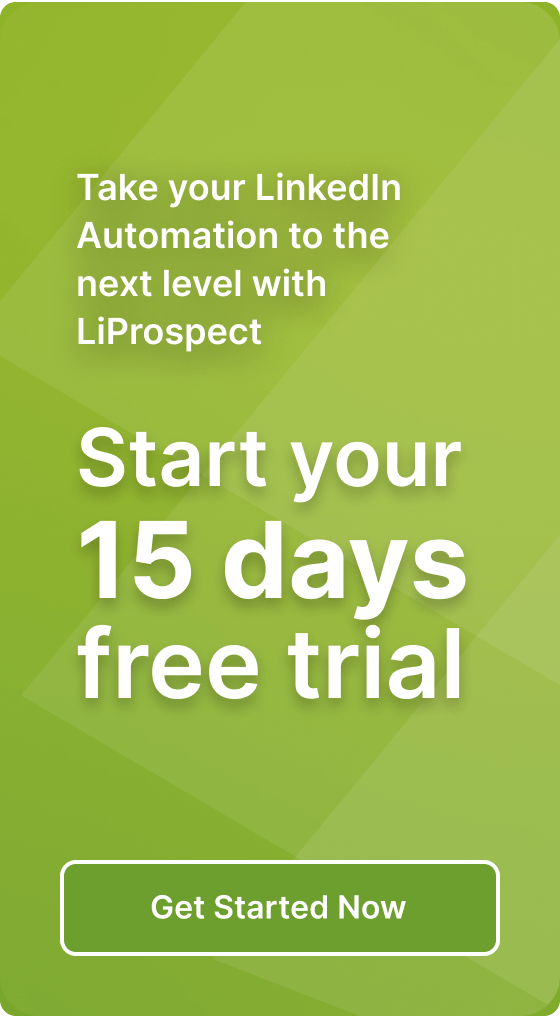LinkedIn Support: Effective Communication Full Guide

LinkedIn is the world’s largest professional networking platform, connecting millions of professionals, businesses, and job seekers worldwide. In today’s digital age, having a strong presence on LinkedIn is essential for building professional relationships, growing your network, and advancing your career. Effective communication plays a pivotal role in maximizing your LinkedIn presence, enabling you to engage with connections, showcase your expertise, and seize new opportunities.
Optimizing Your Profile for Effective Communication
Optimizing your profile for effective communication on LinkedIn is crucial for making a strong impression and attracting valuable connections. Start by ensuring your profile picture is professional and your headline effectively summarizes your expertise and what you can offer. Craft a compelling summary that highlights your unique value proposition, skills, and achievements, using keywords relevant to your industry to optimize for search. Complete the experience and skills sections of your profile to provide a comprehensive overview of your professional background and expertise. By presenting a well-optimized profile, you can increase your visibility, credibility, and attractiveness to potential connections on LinkedIn.
Engaging with Connections
Engaging with connections on LinkedIn is essential for building and nurturing professional relationships. Personalize your connection requests to make them more meaningful and increase the likelihood of acceptance, mentioning how you know the person or why you’d like to connect. Respond promptly and professionally to messages from your connections, demonstrating courtesy and professionalism. Additionally, actively engage with your connections’ posts and updates by liking, commenting, and sharing relevant content. This not only helps foster meaningful relationships but also keeps you top of mind with your network. By actively engaging with your connections, you can strengthen your professional network and unlock new opportunities for collaboration and growth.
Building and Nurturing Relationships
Building and nurturing relationships on LinkedIn is a cornerstone of professional success. Join relevant networking events and groups to expand your network and connect with like-minded professionals in your industry. Engage authentically with others’ posts by leaving thoughtful comments that add value to the conversation, showcasing your expertise and fostering engagement within your network. Additionally, sharing valuable content such as articles, blog posts, and industry insights establishes you as a thought leader and provides value to your connections. By actively participating in networking opportunities and sharing valuable content, you can cultivate meaningful relationships and open doors to new opportunities for collaboration and professional growth.
Leveraging LinkedIn Features for Communication
Leveraging LinkedIn features for communication is essential for maximizing your presence and impact on the platform. Utilize LinkedIn’s InMail messaging feature to reach out to prospects, clients, or potential collaborators directly, crafting personalized messages that demonstrate your interest in establishing a connection. Take advantage of LinkedIn Live and video content to share real-time updates, host virtual events, or showcase your expertise through engaging video content. Additionally, writing and publishing articles or posts on LinkedIn allows you to share your insights, experiences, and industry knowledge with your network, further establishing your credibility and thought leadership. By strategically leveraging these features, you can effectively communicate with your audience, build relationships, and drive engagement on LinkedIn.
InMail Messaging:
Utilize LinkedIn’s InMail messaging feature to reach out to prospects, clients, or potential collaborators directly. Craft personalized messages that demonstrate your interest in establishing a connection and provide value to the recipient. Use InMail strategically to initiate conversations, nurture relationships, and explore new opportunities.
LinkedIn Live and Video Content:
Take advantage of LinkedIn Live and video content to share real-time updates, host virtual events, or showcase your expertise through engaging video content. Live videos allow for direct interaction with your audience, while recorded videos can be shared on your profile or in messages to provide valuable insights or demonstrations.
LinkedIn Articles and Posts:
Write and publish articles or posts on LinkedIn to share your insights, experiences, and industry knowledge with your network. Use multimedia elements such as images and videos to enhance engagement and provide additional context to your content. Regularly posting articles and updates keeps you visible in your network’s feed and positions you as a thought leader in your industry.
LinkedIn Groups and Discussions:
Join relevant LinkedIn groups and participate in discussions to connect with like-minded professionals, share expertise, and engage in meaningful conversations. Contribute valuable insights and advice to group discussions, and use the platform to network, learn from others, and establish yourself as a credible authority in your field.
LinkedIn Events:
Create and promote LinkedIn events to invite connections to virtual or in-person gatherings, webinars, workshops, or networking sessions. Use event pages to provide event details, share updates, and facilitate RSVPs and discussions. Leveraging LinkedIn Events is an effective way to build relationships, generate interest, and drive engagement around specific topics or initiatives.
Maintaining Professionalism and Etiquette
Maintaining professionalism and etiquette on LinkedIn is paramount for building and preserving your reputation in the professional sphere. Respect the boundaries and privacy settings of your connections, refraining from sending unsolicited messages or spamming your network with irrelevant content. Avoid engaging in spammy behavior, such as excessive self-promotion or overposting, and instead focus on providing value to your connections through meaningful interactions and valuable content sharing. Always prioritize courteous and respectful communication in all interactions, treating others with kindness and professionalism, even in challenging situations. By upholding these standards of professionalism and etiquette, you can cultivate a positive online presence and foster trust and respect within your professional network.
Respecting Boundaries and Privacy Settings:
Respecting the boundaries and privacy settings of your connections is essential. Avoid sending unsolicited messages or connection requests to individuals you don’t know personally or who may not be interested in connecting with you. Additionally, be mindful of sharing sensitive or personal information on your profile and adjust your privacy settings accordingly to control who can view your profile and updates.
Avoiding Spammy Behavior:
Steer clear of engaging in spammy behavior on LinkedIn, such as sending mass messages or connection requests to unrelated individuals, or excessively promoting your products or services in comments or messages. Instead, focus on providing value to your connections through meaningful interactions and content sharing.
Being Courteous and Respectful in Interactions:
Always strive to be courteous and respectful in your interactions on LinkedIn. Respond promptly and professionally to messages from your connections, even if you’re declining a request or opportunity. Treat others with kindness and consideration, and avoid engaging in heated debates or arguments, as this can reflect poorly on your professionalism.
Handling Challenging Situations with Professionalism:
Inevitably, you may encounter challenging situations or disagreements on LinkedIn. When faced with such scenarios, it’s important to maintain your professionalism and handle the situation with tact and diplomacy. Remain calm and composed, and address any issues or concerns respectfully and constructively. If necessary, take the conversation offline to resolve the issue privately and professionally.
Fostering a Positive Online Presence:
Finally, focus on fostering a positive online presence on LinkedIn. Share valuable insights, industry news, and professional achievements to showcase your expertise and contribute positively to the platform. Engage authentically with your connections by liking, commenting, and sharing their content, and participate in relevant discussions and groups to expand your network and visibility.
Tracking and Analyzing Communication Efforts
Tracking and analyzing communication efforts on LinkedIn is essential for understanding the effectiveness of your strategies and optimizing your approach over time. Monitor key engagement metrics such as profile views, connection requests, and post interactions to gauge the impact of your communication efforts. Utilize LinkedIn’s analytics tools to identify trends, preferences, and areas for improvement in your communication strategies. By leveraging insights from analytics, you can make informed decisions, refine your approach, and tailor your communication efforts to better resonate with your audience. Celebrate successes and learn from failures, adjusting your strategies based on what works best for your network and professional goals. By continuously tracking and analyzing your communication efforts, you can maximize your impact on LinkedIn and achieve greater success in building relationships and advancing your career.
Monitoring Engagement Metrics:
One of the first steps in tracking communication efforts on LinkedIn is to monitor engagement metrics. These metrics include profile views, connection requests, post interactions (likes, comments, shares), and InMail response rates. By regularly monitoring these metrics, you can gain insights into how your content and interactions are resonating with your audience.
Utilizing LinkedIn Analytics Tools:
LinkedIn offers robust analytics tools that provide deeper insights into your profile and content performance. These tools allow you to track key metrics over time, analyze audience demographics and behavior, and measure the effectiveness of your communication strategies. By utilizing LinkedIn analytics tools, you can gain a better understanding of your audience and tailor your communication efforts accordingly.
Identifying Trends and Preferences:
Analyzing engagement metrics and LinkedIn analytics can help you identify trends and preferences within your target audience. Look for patterns in the type of content that receives the most engagement, the times of day when your audience is most active, and the topics that resonate most with your connections. By identifying these trends, you can adjust your content and communication strategies to better align with the preferences of your audience.
Adjusting Strategies Based on Insights:
Based on the insights gathered from monitoring engagement metrics and analyzing LinkedIn analytics, it’s important to adjust your communication strategies accordingly. For example, if you notice that certain types of posts receive more engagement than others, you may want to focus more on creating similar content in the future. Similarly, if you find that your connection requests are not receiving a high acceptance rate, you may need to refine your approach and personalize your messages more effectively.
Celebrating Successes and Learning from Failures:
Finally, it’s important to celebrate successes and learn from failures when tracking and analyzing communication efforts on LinkedIn. Take note of your achievements, such as reaching a milestone number of profile views or receiving positive feedback on a post. Similarly, don’t be afraid to acknowledge areas where your communication strategies may not have been as effective and use these experiences as learning opportunities for improvement in the future.
Conclusion
Unlock the power of effective communication on LinkedIn with expert support and guidance. Learn proven strategies to engage your audience, build meaningful connections, and achieve your professional goals with the help of LinkedIn automation tools. Connect with me on LinkedIn to discover how automation can streamline your communication efforts and propel your success.
FAQS
What is LinkedIn?
LinkedIn is a professional networking platform that allows individuals to connect with colleagues, industry professionals, and potential employers. It’s commonly used for job searching, networking, and professional development.
How do I create a LinkedIn profile?
To create a LinkedIn profile, visit the LinkedIn website or download the LinkedIn app, then follow the prompts to sign up. You’ll need to provide basic information such as your name, email address, and professional experience.
Is LinkedIn free to use?
Yes, LinkedIn offers a free basic membership that allows users to create a profile, connect with others, and access basic features such as job searching and messaging. However, there are also premium subscription options available with additional features and benefits.
How do I find connections on LinkedIn?
You can find connections on LinkedIn by searching for people you know, connecting with colleagues and classmates, joining LinkedIn groups, and attending networking events. LinkedIn also suggests potential connections based on your profile and network.
How can I optimize my LinkedIn profile?
To optimize your LinkedIn profile, ensure your profile picture is professional, your headline effectively communicates your expertise, and your summary highlights your skills and achievements. Complete all sections of your profile, including experience, education, and skills, and use keywords relevant to your industry.
How do I engage with my connections on LinkedIn?
Engage with your connections on LinkedIn by liking, commenting, and sharing their posts and updates. You can also send personalized messages, join LinkedIn groups, and participate in discussions to foster meaningful relationships and networking opportunities.
Can I search for jobs on LinkedIn?
Yes, LinkedIn offers a robust job search feature that allows users to search for jobs based on various criteria such as location, industry, and job title. You can also set up job alerts to receive notifications about new job postings that match your preferences.
Is LinkedIn only for job searching?
No, while LinkedIn is commonly used for job searching, it’s also a valuable platform for networking, professional development, and knowledge sharing. Many professionals use LinkedIn to connect with others in their industry, showcase their expertise, and stay updated on industry trends and news.




